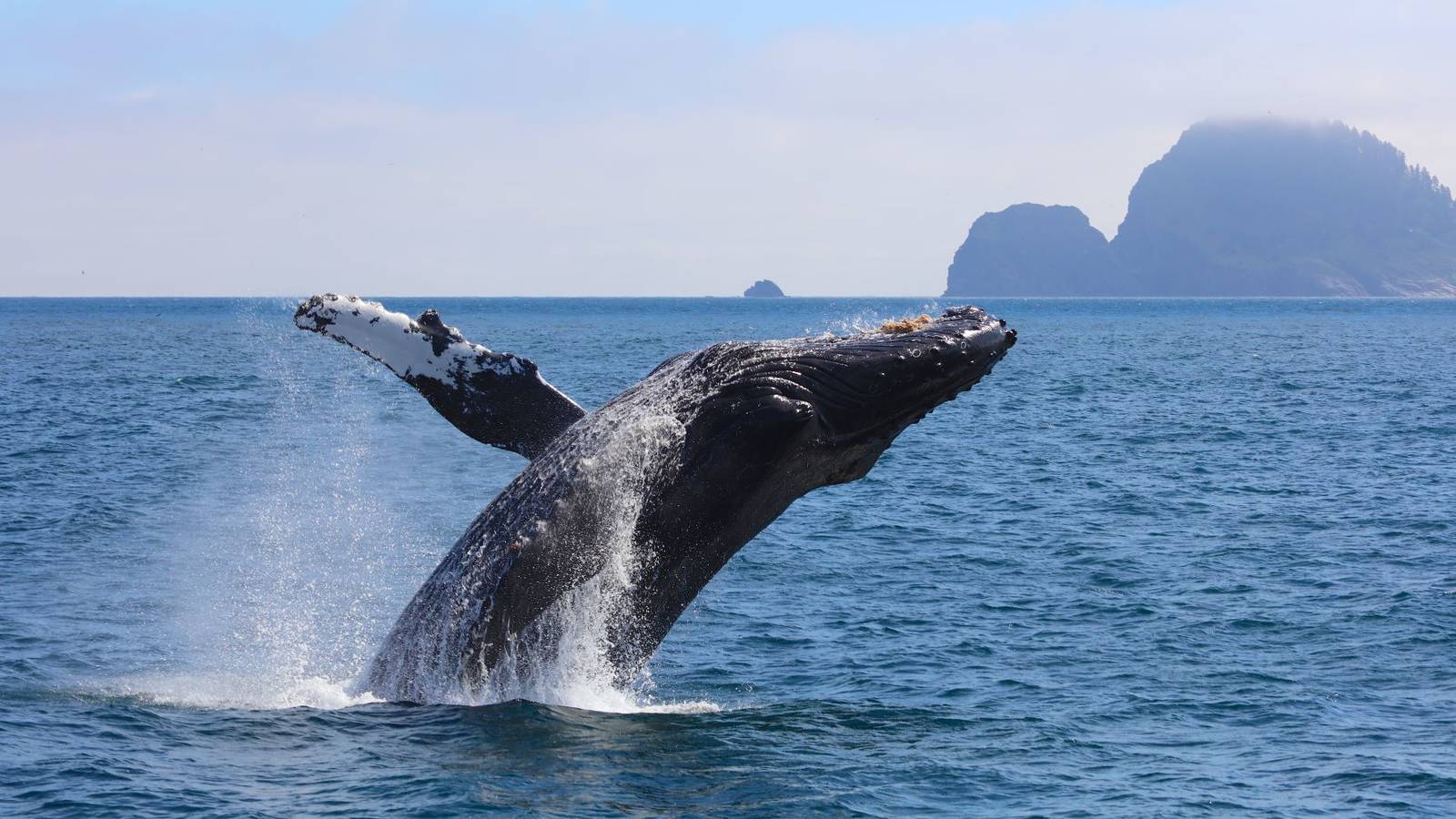Proposed Assault on Endangered Species Act Would Push Park Wildlife Toward Extinction – NPCA

Executive Summary
A report on recent regulatory proposals by the Trump administration indicates a significant weakening of the Endangered Species Act (ESA), a foundational environmental law in the United States. These changes pose a direct threat to the nation’s biodiversity and undermine progress toward key United Nations Sustainable Development Goals (SDGs), particularly SDG 15 (Life on Land), SDG 14 (Life Below Water), and SDG 16 (Peace, Justice and Strong Institutions). The proposals prioritize economic analysis over scientific conservation principles, jeopardizing hundreds of species and the integrity of ecosystems, many of which are located within national parks.
Analysis of Proposed Regulatory Changes
Introduction of Economic Factors
A primary change involves the introduction of economic impact analyses when determining whether a species warrants protection. This policy shift fundamentally alters the ESA’s original intent, which was to make listing decisions based solely on the best available science. This move directly conflicts with the principles of SDG 15, which calls for the integration of ecosystem and biodiversity values into national planning, rather than their subordination to industrial or economic interests.
- Allows for the consideration of economic costs when designating critical habitats for imperiled species.
- Facilitates the approval of industrial projects such as mining, drilling, and pipelines in areas essential for species survival.
- Threatens the habitats of species like the Mojave Desert tortoise and Florida panther.
Weakening Protections for Threatened Species
The proposals would eliminate the standing rule that automatically grants “threatened” species the same level of protection as “endangered” species. This delays critical conservation actions until a species’ population has declined to a potentially unrecoverable point, directly contravening the preventative measures central to SDG 15.5 (halt biodiversity loss and prevent extinction).
Implications for Sustainable Development Goals (SDGs)
SDG 15: Life on Land
The proposed changes represent a significant setback for the achievement of SDG 15. The ESA is the nation’s most effective tool for halting biodiversity loss, and weakening it threatens the stability of terrestrial ecosystems. National parks, which provide sanctuary for over 600 threatened and endangered species, cannot solely ensure their survival without the robust, landscape-scale protections afforded by the ESA.
- Threat to Target 15.5: The regulations increase the risk of extinction for species such as the Pacific salmon, the ghost orchid, and the red-cockaded woodpecker by dismantling protective measures.
- Degradation of Habitats: By prioritizing development, the proposals risk the irreversible degradation of natural habitats essential for biodiversity.
SDG 14: Life Below Water
The impact extends to aquatic ecosystems, affecting progress on SDG 14. The ESA has been instrumental in the recovery of marine and freshwater species.
- The survival of species like the Florida manatee and humpback whale, both beneficiaries of ESA protections, demonstrates the law’s importance for marine biodiversity.
- Weakened habitat protections could further endanger aquatic species by permitting pollution and habitat destruction from industrial projects.
SDG 16: Peace, Justice and Strong Institutions
The administration’s actions challenge the principles of SDG 16, which advocates for effective, accountable, and transparent institutions. The move to dismantle a highly successful environmental law despite broad public support undermines institutional integrity and responsive governance.
- Undermining Effective Institutions: The ESA has a proven success rate of preventing the extinction of over 99% of the species it protects. Weakening this effective legal framework is counterproductive to sustainable governance.
- Disregarding Public Will: National polling indicates that over 86% of Americans, across party lines, support federal efforts to recover endangered species. The proposals ignore this clear public mandate, conflicting with SDG Target 16.7 on responsive and representative decision-making.
Assessment of the Endangered Species Act’s Efficacy
Historical Success in Achieving Conservation Goals
The ESA’s historical effectiveness is a testament to its alignment with the objectives of SDG 15. Its success provides a strong argument against the proposed rollbacks.
- The Act is credited with saving more than 99 percent of listed species from extinction.
- It has enabled the celebrated recovery of iconic wildlife, including the bald eagle and the American gray wolf.
- These successes demonstrate the critical role of strong legal frameworks in achieving biodiversity targets.
Stakeholder Response and Recommendations
National Parks Conservation Association (NPCA) Position
The NPCA has stated that the administration is ignoring scientific principles and public will to fast-track resource extraction. The organization warns that politicizing the species listing process and undercutting science could lead to irreversible extinctions, questioning the environmental legacy being created for future generations.
Public Mandate and Next Steps
The overwhelming public support for the ESA underscores a societal commitment to the values embedded in the SDGs. A scheduled 30-day public comment period offers a crucial opportunity for stakeholders to participate in the decision-making process, reinforcing the principles of inclusive governance as outlined in SDG 16.
Identified Sustainable Development Goals (SDGs)
SDG 15: Life on Land
- The article is fundamentally about protecting terrestrial biodiversity. It focuses on the Endangered Species Act, which is a primary tool for conserving life on land. The text explicitly mentions threats to terrestrial species like the Mojave Desert tortoise, Florida panther, red-cockaded woodpecker, and ghost orchid, and their habitats, which are at risk from industrial projects like roads, pipelines, and mines.
SDG 14: Life Below Water
- The article connects the weakening of wildlife protections to aquatic and marine species. It names the Pacific salmon, Florida manatee, and humpback whale as species that have benefited from the Endangered Species Act and are now at risk. This directly relates to the goal of conserving and sustainably using the oceans, seas, and marine resources.
SDG 16: Peace, Justice and Strong Institutions
- The article discusses the role of governmental institutions and regulations. It critiques the administration’s proposals to weaken the Endangered Species Act, the “mass firing of dedicated staff at US Fish and Wildlife and the National Park Service,” and the move to “politicize the selection process for species recovery.” This highlights issues of institutional effectiveness, accountability, and responsive governance, which are central to SDG 16.
Specific SDG Targets
Targets under SDG 15: Life on Land
- Target 15.5: Take urgent and significant action to reduce the degradation of natural habitats, halt the loss of biodiversity and, by 2020, protect and prevent the extinction of threatened species.
The article directly addresses this target by discussing proposals that would “lead to the decline of hundreds of species already on the brink” and potentially increase extinction rates. It emphasizes the Act’s success, noting that “More than 99 percent of animals, plants and insects protected by the law have been saved from extinction.” - Target 15.9: By 2020, integrate ecosystem and biodiversity values into national and local planning, development processes, poverty reduction strategies and accounts.
The article highlights a direct contradiction to this target. The proposed changes would allow “economic factors to be analyzed when deciding if a species should be saved,” which prioritizes economic development over biodiversity values and makes it “easier to build roads, pipelines, mines, and other industrial projects in critical habitat areas.”
Target under SDG 14: Life Below Water
- Target 14.2: By 2020, sustainably manage and protect marine and coastal ecosystems to avoid significant adverse impacts…
The protection of species like the Pacific salmon, Florida manatee, and humpback whale is intrinsically linked to the health of their marine and coastal habitats. Weakening the regulations that protect these species would undermine efforts to manage and protect their ecosystems from adverse impacts.
Targets under SDG 16: Peace, Justice and Strong Institutions
- Target 16.6: Develop effective, accountable and transparent institutions at all levels.
The article implies a weakening of institutional effectiveness. The “mass firing of dedicated staff,” coupled with actions that “undercut decades of sound science in decision-making,” points to a degradation of the capacity and accountability of the institutions responsible for wildlife protection. - Target 16.7: Ensure responsive, inclusive, participatory and representative decision-making at all levels.
The article states that the administration is “set on ignoring the will of the American people” despite polling that shows “more than 4 in 5 Americans (86%)” support the Endangered Species Act. This suggests that the decision-making process is not responsive to public opinion.
Mentioned or Implied Indicators
Indicators for SDG 15 (Targets 15.5 & 15.9)
- Success rate of conservation law: The article provides a direct quantitative indicator of the Endangered Species Act’s effectiveness: “More than 99 percent of animals, plants and insects protected by the law have been saved from extinction.”
- Number of threatened species in protected areas: The text mentions that national parks “provide habitat for over 600 of the nation’s threatened and endangered species,” which serves as a baseline indicator for the number of species reliant on these protections.
- Conservation status of specific species: The status of the Pacific salmon, ghost orchid, red-cockaded woodpecker, Mojave Desert tortoise, and Florida panther are implied as indicators of biodiversity health and the impact of policy changes.
- Policy changes regarding economic considerations: The proposal to allow “economic factors to be analyzed when deciding if a species should be saved” is a clear policy indicator that measures the integration (or disintegration) of biodiversity values in national planning.
Indicators for SDG 16 (Target 16.7)
- Public opinion on environmental policy: The article cites a specific poll result: “more than 4 in 5 Americans (86%), including 87% of Democrats and 84% of Republicans, support federal agency efforts to continue recovery of threatened and endangered species.” This is a direct indicator of public support and can be used to measure the responsiveness of government actions.
Summary Table of SDGs, Targets, and Indicators
| SDGs | Targets | Indicators Identified in the Article |
|---|---|---|
| SDG 15: Life on Land | 15.5: Protect threatened species and halt biodiversity loss.
15.9: Integrate biodiversity values into national planning. |
|
| SDG 14: Life Below Water | 14.2: Protect marine and coastal ecosystems. |
|
| SDG 16: Peace, Justice and Strong Institutions | 16.6: Develop effective, accountable institutions.
16.7: Ensure responsive, participatory decision-making. |
|
Source: npca.org
What is Your Reaction?
 Like
0
Like
0
 Dislike
0
Dislike
0
 Love
0
Love
0
 Funny
0
Funny
0
 Angry
0
Angry
0
 Sad
0
Sad
0
 Wow
0
Wow
0

















































.jpg.webp?itok=0ZsAnae9#)





:focal(1500,1000)/https://media.globalcitizen.org/a6/9a/a69a4720-d8a1-4715-b596-18738d03c05c/rotary_polio_hero_image.jpg?#)




















